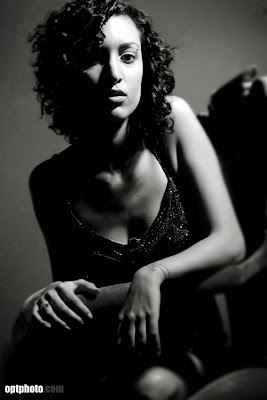Scene 1: Wake up
Story : At early morning, Jose woke up from her nightmare. She was nervous and can't even take breath because the nightmare was too real and fearful and it was already been her dream since she was 8 years old. She ate her medicine to calm herself down. After she felt better, then she went to bathroom to wash herself up before going to work.
Woke up from nightmare
We use key light from the right side of the subject and fill light from the left side to separate the background and the subject.
We used lighting to create the half shadow on the face.
Eating medicine
We use key light in front of the subject to show the clear actions of the subject and black mounting board to absorb the excess light.
Getting up from bed
In this scene, we used the low angles to create the effect that show the clear half figure of face.
Scene
Out of the Past (1947)
In our scene,
In this part, we used the concept of rule of thirds.
We want to show the main character got down from the bed.
Washed up before going to work
We use the key light from the left side of the subject.
Besides that, we also use daylight from the left side of the subject but we covered the excess daylight by using black mounting board.
We decided to use mirror to reflect main character while washing herself up.
We focused on the reflection of the subject but not the real image of the subject.
This is because we think that this will show more better composition and more creative compared to just only the subject washing herself up.
Scene: Brush teeth
From the side of the subject
We did the image reflection.
Besides that, we also use daylight from the left side of the subject but we covered the excess daylight by using black mounting board.
We decided to use mirror to reflect main character while washing herself up.
We focused on the reflection of the subject but not the real image of the subject.
This is because we think that this will show more better composition and more creative compared to just only the subject washing herself up.
Scene: Brush teeth
From the side of the subject
We did the image reflection.
In my own opinion, I think this scene should shoot in more brighter light from my left side and the shadow need to improved. Besides that, I think the angle from camera need to be adjusted a bit far away from the subject.
And the bathroom need to be like this, I mean a bit dirty or old for making the interior more interesting and more noir feeling.
Scene 2: Mysterious student approaching
Story: Jose was giving her lecture while a student was late and came in interrupting the class. After the class, the mysterious student walked at the last one and stood in front of Jose without talking. After a while, the student told her to stay low profile but not standing in front of the class teaching and questioned her about her own identity.
Giving lecture
We used key light from the left side of the subject and back light of the subject to separate the background and the subject.
Watching her student walking out of classroom
We used the light from outdoor to form silhouette.
Example
Example
In our scene,
Another type of film noir imaging is silhouetting of the characters against a light background such as in the The Big Combo.
In addition, I think there should have a scene like this while the student approached and satirised the lecturer and it would be better.
That's all. Thank you :)





















































